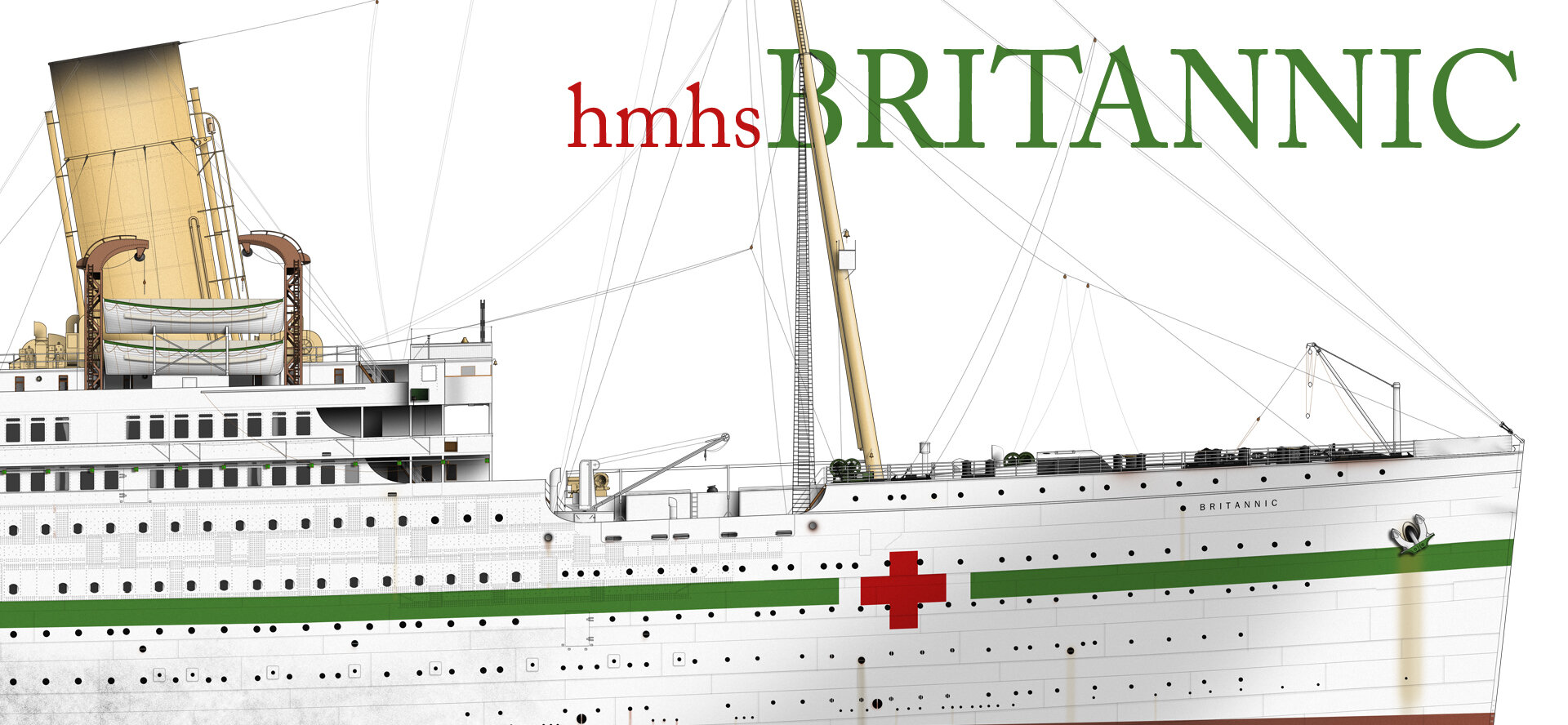HMHS Britannic
Illustration by Michael C Brady, 2020
His majesty’s hospital ship
From 1916, Britannic served as a floating hospital with a complement of 101 nurses, 336 non-commissioned officers and 52 commissioned officers as well as a 675 crew. Her commissioning as a hospital ship was due to the disastrous Dardanelles campaign which saw at least 90,000 wounded evacuated.
Britannic was the largest ship lost in the First World War - but improvements made to her design meant she sank slowly and stably, and her enhanced lifeboat capacity meant there was ample room for all aboard. Tragically, 28 people lost their lives when they launched their boats in a panic contrary to Captain’s orders and were dashed to pieces on the still-turning propellers which were raised out of the water.
Today, her wreck lies on the starboard side in shallow waters off Kea, Greece. She is in mostly good condition and is a popular dive site.
THE details
Britannic’s hull towards the aft expansion joint. On the day of her sinking the ship’s sidelights were open to air out the wards against precautions, ensuring water could flood into the ship more easily. The square object with sooty smudge around it is a coaling port providing fuel to the ovens and boilers of the 1st and 2nd class galley on D-Deck.
At time of sailing Britannic’s complement of gantry davits had not yet been completed. Instead, conventional Wellin davits and smaller boats were installed along her boat deck in a similar way to her sister Olympic.
Forward at the bridge; a compass platform was installed above the wheelhouse and a semaphore telegraph installed.
A small canvas screen at the prow prevented water from rushing over the forecastle. Here Britannic’s forward anchor crane is rigged for operations with blocks and tackle installed.



















